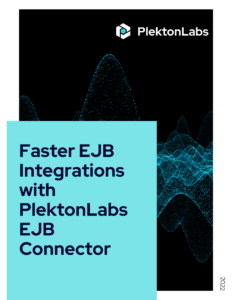Because the wave of digital transformation has impacted almost every sector in the fintech industry, the world is connected and APIs play a major role in this connectivity. Whether you work in IT or finance, you may have worked with APIs; either building them, selling them, maintaining them, or consuming them. However, despite their abundance, there are lots of API myths or misconceptions out there.
This can pose certain problems. Your business can have trouble making decisions, executing plans, and even hindering the improvements in API delivery and maintaining the API ecosystem.
We’ll talk about some of the common myths floating around APIs and integration. Knowing these misconceptions can help you avoid the pitfalls of misinformation.
5 API Misconceptions and Mistakes That Need to be Left Behind
One of the biggest API myths or misconceptions that people have is that their APIs are working just fine and there are no tweaks or fine-tuning needed. This could not be further from the truth. APIs need to be monitored throughout their lifecycle and checked to see if there are any underlying issues that can become a serious concern later on.
If you aren’t sure where to start to correct this misconception, ask yourself (and your IT team) a few questions. Are you sure that your API is working as it should? Are you keeping tabs on the performance of the API and running appropriate coverage tests? Is the API being monitored and are the frameworks for proper governance and management in place?
Unfortunately, many API development teams build with strict deadlines, and can’t test or monitor their performance properly. This means that a lot of the time, you have no guarantee that the API can do what it is supposed to. Vigilant monitoring is the best solution for this problem.
API security is another area with lots of misconceptions. The biggest one is the assumption that your API is perfectly safe from external threats. Just because you haven’t been hacked or had a major security breach, doesn’t mean that you’ve taken all the necessary measures to prevent your API from being targeted by malicious users. If you are publishing a public API, you must check your API and make sure it conforms to guidelines and protective measures.
This also applies to third-party APIs you integrate with. Moreover, API security is a long-term, ongoing deal. This means security measures and protocols need to be updated regularly.
Many people in fintech industries think that APIs are purely technical, so IT must be the only ones to deal with them. However, APIs involve exposing IT capabilities as products and are assets that one can monetize. As a result, APIs are equally connected to both the IT and business sides of things.
Because of this, APIs aren’t just for IT departments to deal with. The inclusion of a Center for Enablement (C4E) combines personnel from the IT department with those from other parts of the business including HR, Sales, Marketing, and Operations.
Furthermore, if you think that the third-party API you just integrated with will work indefinitely, think again! API products can break down quickly if they don’t have a healthy API ecosystem and lifecycle management to keep them running smoothly. This is especially true if you integrate with smaller businesses that have a higher chance of going under out of the blue.
Integrating with big players like Google or Amazon poses its own set of problems. This is because major companies often change their public API strategies. Sometimes, these changes mean that your integration with them will fall through the cracks, often without much warning.
Instead of integrating with large companies like these where have no say in what happens, integrate with a trustworthy API provider that really depends on your subscription to deliver their services.
The last API myth has more to do with infrastructure. APIs come in various shapes and sizes, especially those in the enterprise. Many people think a top-down approach is meant for larger businesses with a more complicated infrastructure.
However, a top-down approach is great for providing smaller enterprises with a more scalable, maintainable infrastructure. Moreover, a top-down approach to API design at any individual opportunity will help boost the consumer experience as well as the general landscape of your API infrastructure.
This works out because most functional and effective APIs are designed with the consumer’s needs as the priority. And customer satisfaction is what every successful business model strives for.
Final Say
Identifying common misconceptions about APIs can go a long way in preventing errors and mishaps when dealing with integration, third-party or otherwise. It will also help you get the most out of your API experience, allowing you to use your APIs safely and effectively.




